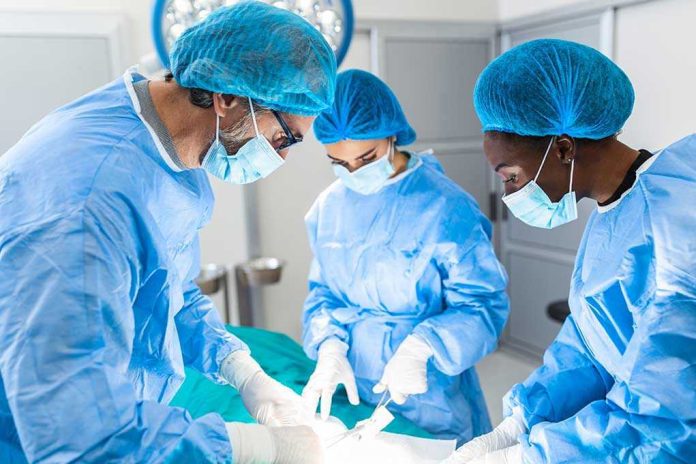
Revolutionary ACL treatment methods are replacing surgery, offering hope to athletes and active individuals.
Story Highlights
- FDA-approved BEAR® Implant supports natural ACL healing without surgery.
- Non-surgical protocols and biological therapies gain popularity.
- Efficacy of new treatments confirmed by multiple studies.
- Reduced risks and faster recovery appeal to patients and clinicians.
Emerging Breakthroughs in ACL Treatment
The anterior cruciate ligament (ACL) injury landscape is undergoing a profound transformation. Traditionally, ACL tears have been managed through surgical reconstruction, a method fraught with risks such as infection and prolonged recovery. However, the recent introduction of the BEAR® Implant, approved by the FDA in 2020, marks a pivotal shift. This innovative device allows the body to heal its own torn ACL without graft-based surgery, heralding a new era in sports medicine.
Alongside the BEAR® Implant, non-surgical treatment options, such as advanced rehabilitation protocols and biological therapies like platelet-rich plasma (PRP) and stem cells, are gaining traction. These treatments focus on enhancing the body’s natural healing processes, offering a less invasive path to recovery. Clinical trials and studies conducted in recent years have demonstrated the efficacy of these alternatives, showing comparable results to traditional surgery in many cases.
Adoption and Impact on Medical Practices
Since the FDA’s approval of the BEAR® Implant, its clinical use has expanded rapidly. Healthcare providers are increasingly adopting non-operative protocols, including cross-bracing and specialized rehabilitation programs, to treat ACL injuries. These methods not only reduce surgical risks but also enable faster return to activity, aligning with the desires of patients, particularly athletes, who seek effective and swift recovery options.
The shift towards non-surgical solutions also reflects a broader trend in medicine—patient-centered care. As more patients become informed about their treatment options, they are actively participating in decision-making processes. This dynamic is reshaping the relationships between patients, clinicians, and medical device companies, with a growing emphasis on evidence-based practices that prioritize patient outcomes.
Long-Term Implications and Future Directions
This transition in ACL treatment holds significant implications for the healthcare industry. Economically, the reduced need for surgeries may lower healthcare costs and minimize the financial burden on patients and insurers. Socially, the enhanced quality of life resulting from quicker recovery times benefits active individuals, allowing them to resume their daily activities with minimal interruption.
As research continues, the long-term impact of these treatments will become clearer. While initial results are promising, ongoing studies are necessary to refine treatment protocols and ensure optimal patient selection. The potential for these innovations to redefine standard care practices in orthopedic medicine is immense, promising a future where invasive surgeries become a rarity rather than the norm.
Sources:
Logan Physio: Non-operative ACL Rehab and Cross-Bracing Protocol
Florida Sports Injury: Breakthrough ACL Treatments (BEAR, PRP, Stem Cells)
Gunnison Valley Health: BEAR® Implant and FDA Approval
Shriners Children’s: BEAR Implant Technology and Clinical Use



